Economy

Conference Board: Consumer Confidence Dips in September
Written by Peter Wright
October 1, 2019
Consumer confidence as reported by The Conference Board declined more than expected in September. Month on month, the composite value of the index declined from 134.2 to 125.1. Calculated as a three-month moving average (3MMA) to smooth the monthly volatility, the measure of consumer confidence actually increased slightly from 131.4 to 131.7. This is why we consider a moving average.
The composite index is made up of two sub-indexes: the consumer’s view of the present situation and his or her expectations for the future. In September, expectations were almost on trend, but the consumer’s view of the present situation is still below the nine-year trend line (Figure 1).
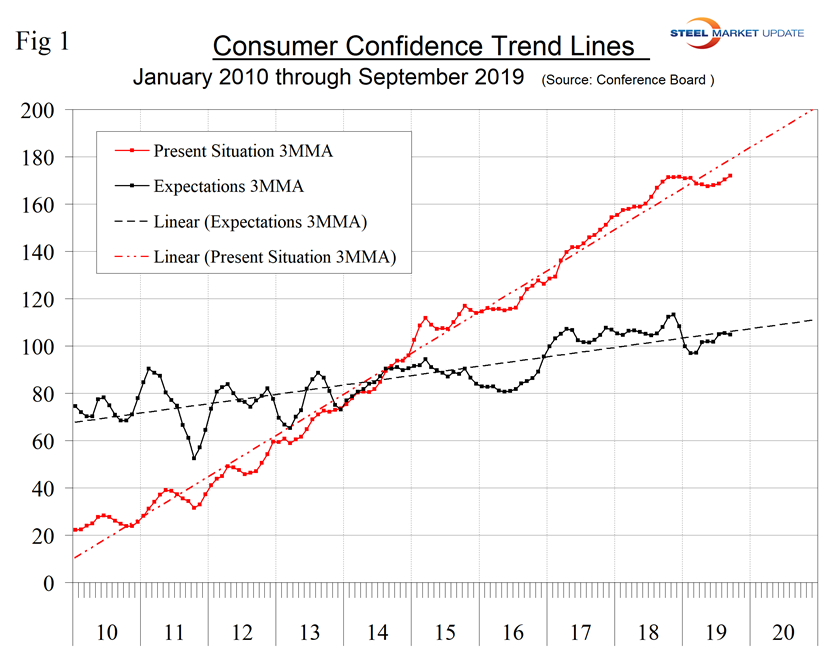
Moody’s Analytics summarized as follows: “The Conference Board’s consumer confidence index is choppy, so the drop in September doesn’t raise an immediate red flag. The relationship between confidence and spending is loose in the short run. The Conference Board index fell from a revised 134.2 in August (previously 135.1) to 125.1 in September, weaker than our below-consensus forecast. Confidence remains elevated relative to that seen for most of this expansion. Consumers’ assessment of present conditions dropped from 176 to 169, while expectations fell from 106.4 to 95.8. The labor market differential narrowed but remains favorable. Buying plans were generally softer in September than in August. Overall, fundamentals remain solid for the consumer and they will be the key cog for the economy.”
The consumer’s view of the present situation in September was 169.0 down from 176.0 in August, which was the highest since November 2000. Expectations in September were 95.8, down from 106.4 in August. The historical pattern of the 3MMA of the composite, the view of the present situation and expectations since January 1990 are shown in Figure 2.
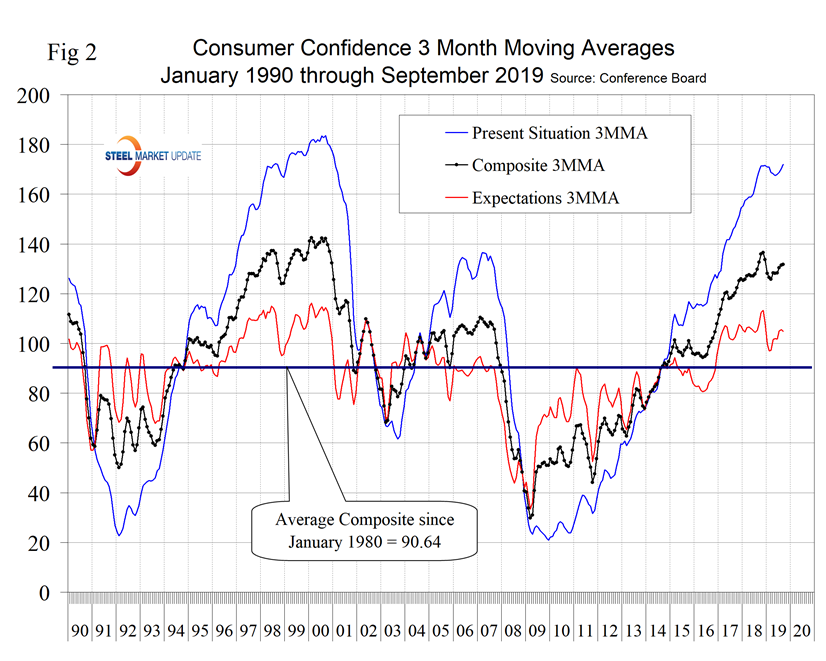
On a three-month moving average basis comparing September 2019 with September 2018, the 3MMA of the present situation was up by 2.5 points and expectations were down by 3.2 points, (Table 1). The color codes show improvement or deterioration of the individual components in Table 1. July and August were the first months for the table to be all green since January 2018. By this measure there was a real deterioration in September.
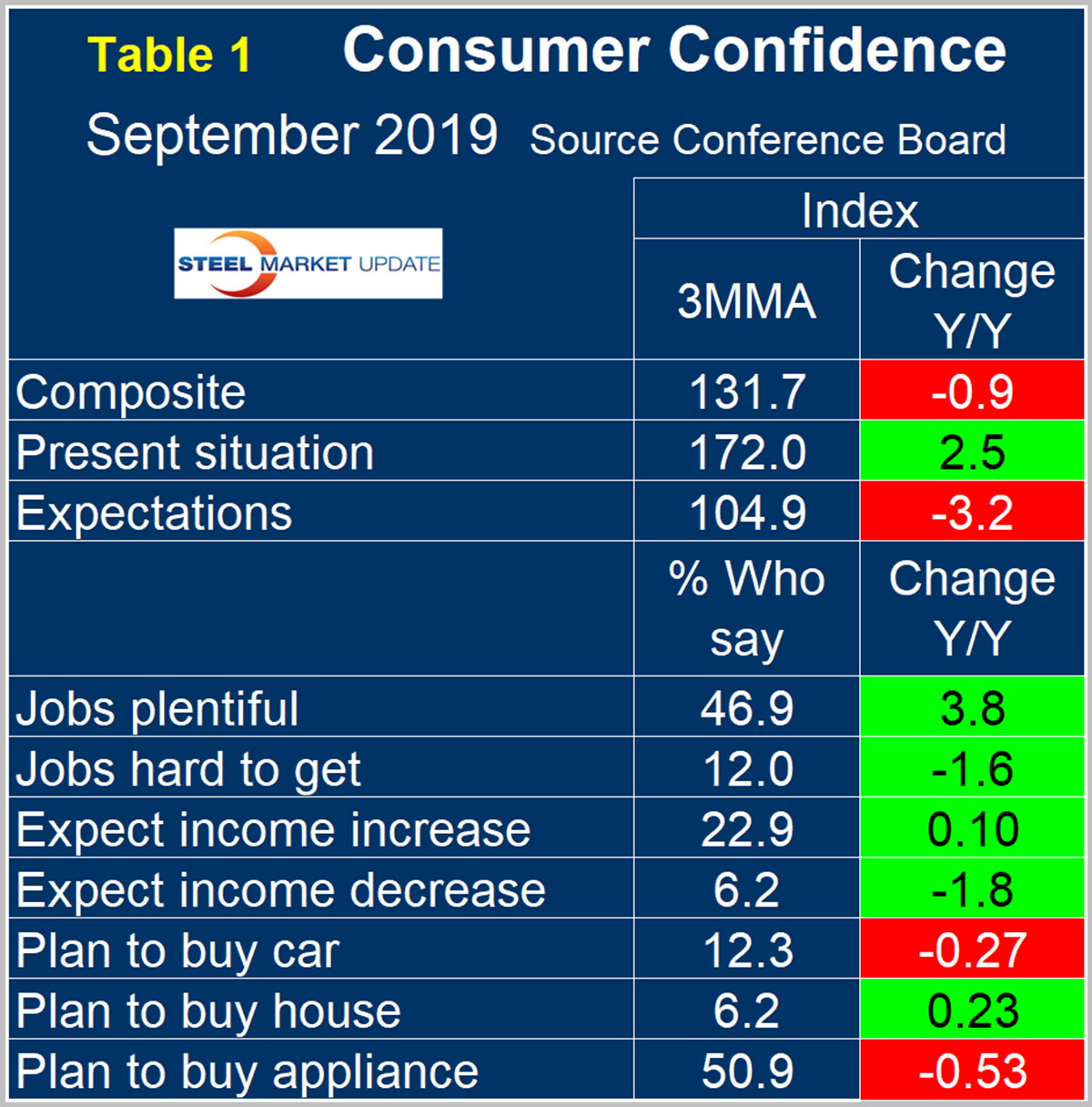
The consumer confidence report includes employment data that is still encouraging as 44.8 percent of respondents reported jobs to be plentiful and 11.6 percent reported jobs hard to get. Expectations for wage increases were also positive, with 19.0 percent expecting an increase and 5.6 percent expecting a decrease.
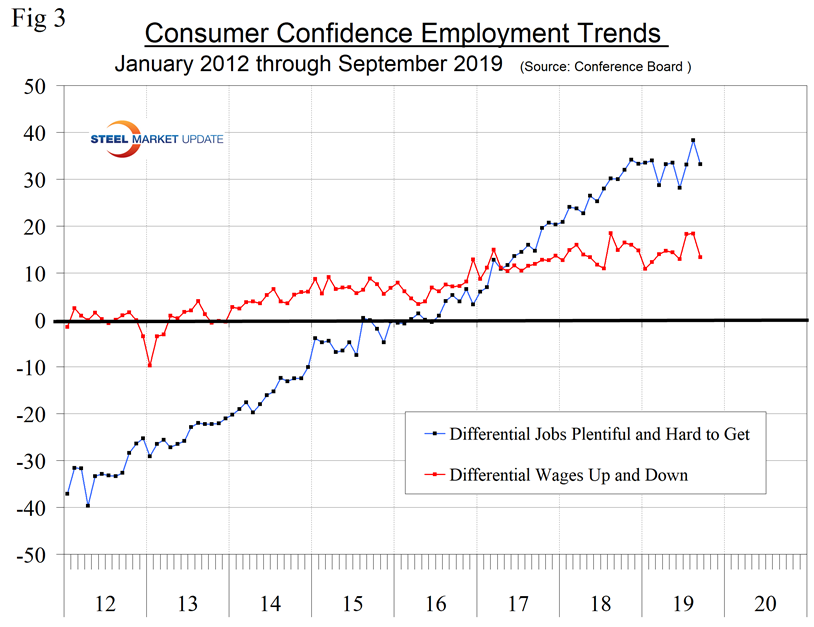
Consumer spending measures in September indicated that year-over-year plans to buy a car declined to the lowest level since August last year. Plans to buy an appliance have been improving erratically for seven months and plans to buy a house have not made progress in almost two years(Figure 4).
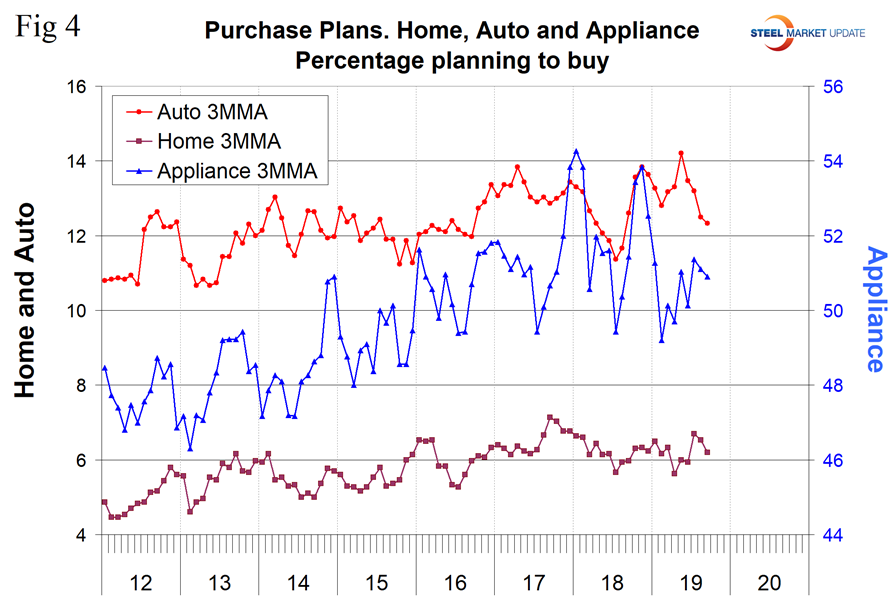
SMU Comment: The Conference Board Consumer Confidence Index is a volatile measure and must be reviewed as a three-month moving average to obtain a realistic view of trends. Based on Table 1, the September results seem to suggest a real deterioration even on a 3MMA basis. Steel demand is dependent on the growth of GDP, which in turn is strongly influenced by consumer confidence, disposable income and a willingness to spend, therefore this is a report we need to keep an eye on.
About The Conference Board: The Conference Board is a global, independent business membership and research association working in the public interest. The monthly Consumer Confidence Survey®, based on a probability-design random sample, is conducted for The Conference Board by Nielsen. The index is based on 1985 = 100. The composite value of consumer confidence combines the view of the present situation and of expectations for the next six months.

Peter Wright
Read more from Peter WrightLatest in Economy

ISM: Manufacturing expansion loses steam after two months of growth
US manufacturing activity slowed in March after two straight months of expansion, according to supply executives contributing to the Institute for Supply Management (ISM)’s latest report.

Chicago Business Barometer rose to 16-month high in March
The Chicago Business Barometer increased for the third-consecutive month in March. Despite this, it still reflects contracting business conditions, as it has since December 2023.

Durable goods orders rise again in February
Transportation equipment led the increase, rising 1.5% to $98.3 billion.

Consumer confidence falls for fourth consecutive month
People remain concerned about inflation, trade policies, and tariffs.

Housing starts ticked up in February
Single-family starts last month hit a rate of 1.10 million, a month-over-month increase of 11.4%, census data shows.
